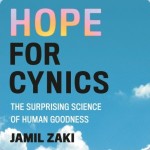Teachers, students, people: we spend lots of our time figuring stuff out.
Sometimes, we do that figuring out by sorting through options, considering similar situations in the past, trying out logical possibilities, and so forth.
And other times, the figuring out just happens: “AHA!”
If we’re going to think about these different mental experiences in a scientific way, we need technical terminology; so, let’s go ahead and call that first process “analysis” and the second one “insight.”
Analysis (I’m paraphrasing from this study here)
- involves searching long-term memory for potential algorithms, schemas, or factual knowledge,
- feels effortful, and
- happens consciously;
Insight, on the other hand,
- happens more-or-less automatically,
- feels effortless, and
- happens unconsciously.
The two questions I’ll explore below are:
- how does working memory load influence the Aha! experience? and
- how does the answer to that question shape the way we plan teaching?
Brace yourself for a radical answer to question #2.
AHA + Working Memory
Obviously, analysis loads working memory. All that comparing options and combing through long-term memory takes up scarce working memory resources.
But what about insight? Do those Aha! moments require working memory?
To answer this question, a group of Dutch researchers asked 100+ college students to solve fun mental puzzles.
Here’s the game:
I’m going to list 3 words, and you’re going to tell me another word that “goes with” all three.
So, if I say “artist, hatch, route,” you might come up with the word “______.”
Perhaps you came up with a solution by working your way through various familiar phrases: “con artist? makeup artist?” That would be an analysis solution.
Or perhaps the answer — “escape” — just came to you without any deliberate thought process. That would be an insight solution.
These problems have a splendidly cumbersome name: “compound remote association tests.” Happily, they allow for a handy acronym: CRA.
In their study, the Dutch researchers had students solve CRA problems.
One group of students had no additional working memory load.
A second group had a small WM load; they had to remember a two-digit string while solving problems.
A third group had a larger WM load; they had to remember a 4 digit string.
So, here’s the research question: did the WM load have an effect on analysis solutions or insight solutions as students undertook CRA tests?
Answers, Plus
“Yes, and no.”
In other words:
“Yes”: as WM load increased, the number of correct analysis solutions decreased.
“No”: as WM load increased, the number of correct insight solutions stayed the same.
Now, the first half of that answer was easy to predict. When researchers increased the WM load, the students’ WM “headroom” decreased. Because analysis requires WM capacity, students’ reduced headroom made CRA solutions harder.
The second half of that answer is really interesting.
Students were equally good at insight solutions no matter the WM load. The logical implication: insight solutions do not require WM. (At least, not in a way that is detected in this research paradigm.)
Now that we know the answer to that question, what do we teachers do with that information? How does it help us plan our teaching?
Thinking Aloud
I should say at this moment that I’m switching from research to speculation. That is: the blog post up to know has been a summary of a research study. I’m now leaving that study to consider what we might do with this information.
First off, I suspect that a very large percentage of the school work students do requires analysis, not insight (as defined in this study).
That is: my students have to think their way through grammar solutions. They have to ponder the meaning of that symbol — or that sentence — right there.
They rarely say: “it just came to me — that’s a participle!”
If I’m right that MOST school work relies on analysis, then MOST of the time we teachers must focus on working memory load.
If we place too much stress on working memory, we will hamper our students’ ability to accomplish those analytical tasks.
But…drum roll please…I can imagine niche-y circumstances where we WANT students to prefer insight to analysis. In those circumstances, I hope my students say, “Aha!” rather than “let me think about that.”
For instance: improv theater.
When actors try improv, we want them to “get out of their heads” and let instincts take over. (For the record: I’m bad at improv my self, but I founded and coached an improv troupe at the high school where I taught.)
This thought process leads to an even more surprising idea…
There’s a First Time for Everything
I spend much of my professional life explaining working memory to teachers and coaching them to avoid working memory overload. After all: “no academic information gets into long-term memory except through working memory.”
If, however, WM load hampers analysis, it might thereby indirectly promote insight.
Perhaps then I should deliberately ramp up WM load during improv rehearsals. This approach would make analytical solutions less likely, and in that way make insight solutions more likely.
This improv-coaching idea leads to other, equally radical possibilities. Are there other times during a students’ academic career where we prefer insight to analysis? Should we, during those lesson plans, keep working memory demands unusually high?
I can hardly believe that I’m seriously talking about deliberately stressing working memory. My professional identity is wobbling.
TL;DR
A recent study by Dutch researchers suggests that analytical problem-solving requires WM, but insight problem solving doesn’t.
This finding has prompted me to wonder if we should — in rare circumstances — increase WM load to make students’ insight solutions likelier.
That possibility is entirely new to me — but quite fun to ponder. I hope that my WM friends — and my improv friends — will join the conversation.
Stuyck, H., Cleeremans, A., & Van den Bussche, E. (2022). Aha! under pressure: The Aha! experience is not constrained by cognitive load. Cognition, 219, 104946.




